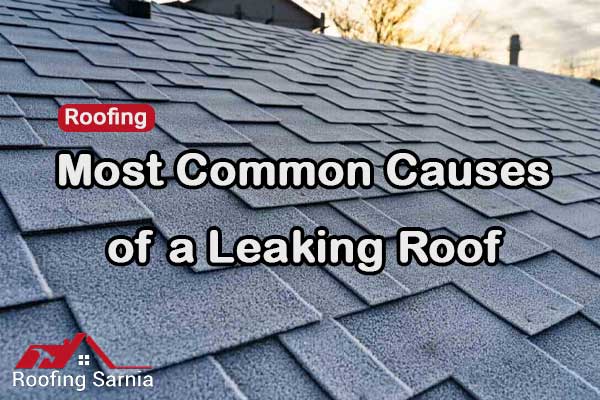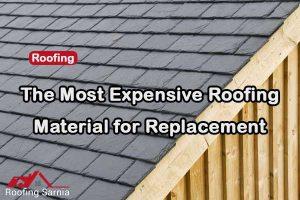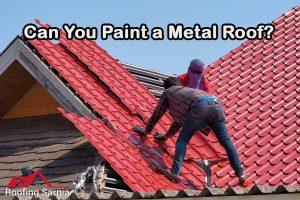A leaking roof can be a distressing situation, often bringing along untold damages and expenses. A variety of factors can lead to a leaking roof, such as the age of the roof and the presence of broken or missing tiles or shingles. In this article, we will delve into these common causes, providing insights on how these factors can lead to roof leaks and offering solutions to mitigate them.
If you find yourself dealing with a leaking roof and require Roof Restoration Services in Sarnia ON, feel free to visit our website, Roofing Sarnia, for top-notch services.
First Causes of a Leaking Roof: Age of Roof
The longevity of roofing materials is finite, often deteriorating as they reach the end of their lifespan. The majority of roof tiles and shingles are constructed to endure for several decades, but deterioration is inevitable. Proper maintenance, like moss removal from roof tiles, can postpone the aging process, but all roofing materials ultimately succumb to weather extremes, impact, and accumulated debris, leading to brittle tiles and potential cracks. The petrochemical oils in asphalt shingles, which aid in adjusting to weather fluctuations, dry out over time, causing the shingles to dry out, break, and lose their water-resisting ability. Hence, age-related failure of roofing materials is a prevalent source of roof leaks.
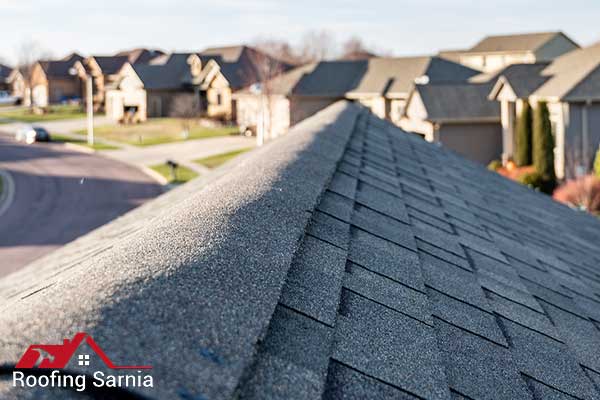
Broken or Missing Roof Tiles or Shingles
Broken or missing shingles expose the roof to the elements, allowing water to penetrate during rain, snow, or hail. A regular inspection can help in identifying missing shingles early on. Roof tiles, serving as the primary protective layer, are susceptible to damage from falling debris and other impacts. Though roofing materials are robust, damage and subsequent leaks are inevitable when tiles are compromised. Identifying and replacing damaged tiles can resolve this issue, but sometimes underlying structures also need replacement due to rot caused by persistent moisture.
Clogged Gutters
Gutters play a crucial role in maintaining a structurally sound property by preventing water accumulation and leakage. However, when obstructed, gutters cease to function effectively, allowing water to pool and penetrate vulnerable roof areas. The accumulation of leaves, twigs, and other debris, especially during Autumn, can clog gutters, hindering water flow and causing potential roof leaks. Regular cleaning and inspection of gutters, particularly before spring and winter, are essential for preventing blockages and subsequent roof leaks.
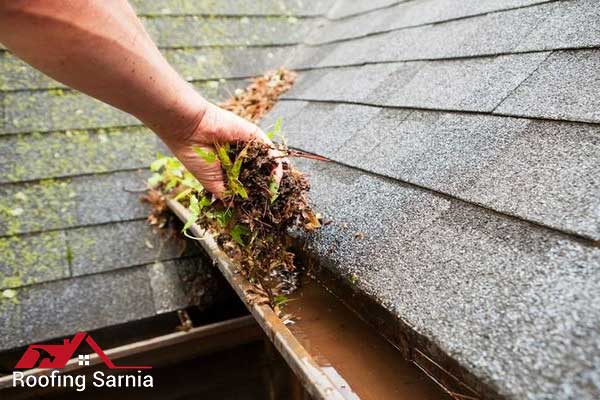
Damaged Roof Vents
Roof vents ensure a balanced and healthy atmosphere within the roof by letting out warm air and reducing excess moisture. However, damaged vents or faulty seals can lead to leaks. Visual indications like dark spots beneath the vents can hint at potential leaks. To address vent leaks, it is essential to replace damaged components like the rubber boot or the vent itself and ensure proper sealing around the vent area.
Damaged Flashing
Flashing seals and protects the joints of the roof, preventing water and pests from infiltrating. However, damaged flashing can facilitate roof leaks. Factors like age, fluctuating temperatures, and direct impacts can compromise the integrity of the flashing. Given the crucial role of flashing around skylights, chimneys, and roof intersections, prompt repair and regular inspection are imperative to prevent leaks.
In case of any roof restoration needs or to learn more about maintaining the integrity of your roof, do visit our website, Roofing Sarnia, for professional assistance and advice.
Poorly Installed Skylights and Roof Leaks
Incorrectly installed skylights are a prominent source of roof leaks. An evident sign of such leakage is often simple to spot around the roof windows. If the leak is near the top of the skylight, it usually signals damaged flashing rather than the window. Beyond wear and tear or external damages, improper installation is typically the culprit behind a leaking roof window. To address this, clear any debris around the area, scrutinize each component for cracks or damages, and seal them using resin or silicone. Inspecting the window flashing is crucial even if it doesn’t seem to be the problem. Skylights brighten homes with natural light but can invite leaks if not properly installed and maintained, emphasizing the importance of correct fitting and installation to prevent water damage.
Condensation in the Attic leading to Roof Leaks
Attic condensation, prevalent in winter due to temperature discrepancies inside and outside the home, can lead to moisture in the house. Warm water vapors, when reaching a colder attic, turn into condensation, forming water droplets on attic wood. This condensation can induce wood rot and mold, leading to extensive, expensive repairs. To mitigate this, ensure proper attic insulation and ventilation. Failure to address rising warm air turning into condensation can result in roof leaks and mold proliferation.
Chimney Damage and Roof Leaks
Chimneys, integral to venting smoke and gases from fuel-burning appliances, consist of components susceptible to causing roof leaks. Of importance are the chimney cap, which prevents direct water entry; the cement crown that protects the mortar in the bricks; and the brick mortar which, when cracked, allows moisture to penetrate and damage the chimney system. Effective chimney maintenance involves inspecting and repairing these components and the flashing around the chimney base, ensuring the entire system is intact and functional.
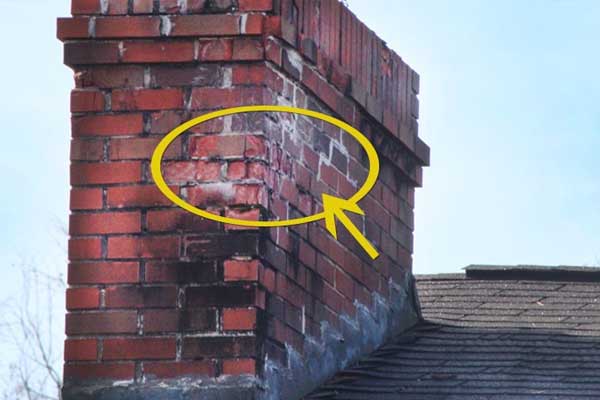
Overhanging Trees causing Roof Leaks
Overhanging trees, though aesthetically pleasing, can damage roofs through falling branches and debris, leading to roof leaks. To prevent the detrimental impacts of leaves and branches on roof tiles and gutters, it’s crucial to prune back branches or consider tree removal.
Poorly Sealed Roof Valleys leading to Roof Leaks
The junction where roof sections meet, or the roof valley, is vulnerable to leaks, particularly if the flashing along it is damaged or incorrectly installed. Addressing this requires inspecting and possibly replacing the lead flashing, crucial for preventing water ingress at this juncture.
Conclusion
In summary, various elements like improperly installed skylights, attic condensation, chimney damage, overhanging trees, and poorly sealed roof valleys can be sources of roof leaks. By ensuring proper installation, regular inspection, and maintenance, many of these issues can be averted, protecting your home from potential water damage. For comprehensive solutions and professional advice, visit Roofing Sarnia.
FAQ
How can I pinpoint the source of a leak in my roof?
Inspect areas such as flashing, caulk, and sealants, and the installation of shingles. Damages in these areas can lead to water infiltration.
Which part of the roof is more prone to leaks?
Chimneys are notably susceptible, often due to compromised flashing, acting as a seal in intersecting roof areas.
How do I prevent my roof from leaking water?
Identify the leakage point, clean the area around the crack, apply a waterproof patch, secure the edges with tape, and finish with a waterproof coating.
Can a roof leak be sealed from the inside?
Yes, small leaks can often be repaired from the inside, particularly in the attic, as a temporary solution.
Do all roofs eventually develop leaks?
Roofs, although designed to withstand harsh conditions, do deteriorate over time and can develop leaks.
Can intense rainstorms lead to roof leaks?
Yes, areas prone to water pooling and overwhelmed gutters can indeed cause roof leaks during heavy rainfall.
